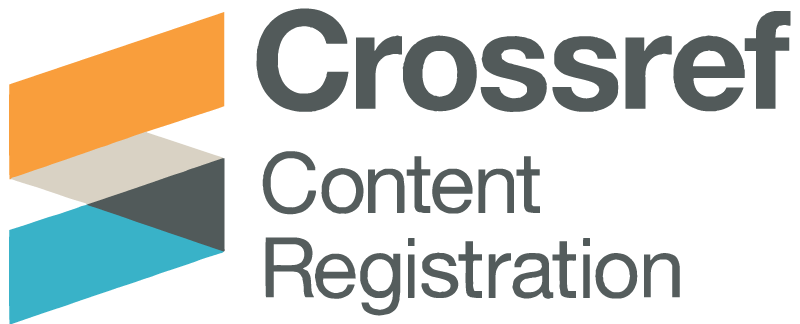دمج فعال لاستراتيجيات التعليم عبر الإنترنت والتعلم عن بعد في تطبيقات الحاسوب في الهندسة الكيميائية خلال جائحة الكوفيد
DOI:
https://doi.org/10.59743/aujas.v6i5.1486الكلمات المفتاحية:
DWSIM، تصميم تعليمي بمساعدة الحاسوب، التعليم الهندسي، نظم إدارة التعليم، إدارة المحاكاة، إدارة المحاضرات القائمة على الفيديوالملخص
الهدف من هذا البحث هو العثور على طرق قائمة على الأدلة لتحويل تعليمات معمل برمجة الحاسوب العملية إلى تقنية تدريس عن بعد تحقق نتائج تعليمية مستهدفة دون التضحية بالمهارات الشخصية. واجه كل من المدربين والطلاب عقبة كبيرة، والتي من الواضح أنها تتطلب التحول إلى التعلم عن بعد وتعليم مقرر تطبيقات الحاسوب في الهندسة الكيميائية للسنة الخامسة خلال جائحة الكوفيد. لقد استخدمنا تقنية مختلطة عبر الإنترنت لحل هذه المشاكل في هذا المقرر الجامعي بجامعة المرقب، والتي خففت من الانتقال من التعلم التقليدي وجها لوجه في الفصول الدراسية إلى إعداد تدريب البرمجة عبر الإنترنت لبرمجيات تطبيقات الهندسة الكيميائية. تم تنفيذ المكون المتزامن للتعليم باستخدام منصات مؤتمرات الفيديو من قوقل مييت في حين أن الجزء غير المتزامن من التدريس تم إنجازه من خلال بث مقاطع فيديو محاضرات مسجلة مسبقا في نظام إدارة التعلم، فإن فصل قوقل هو خيار ممتاز كمنظومة إدارة تعلم، مما يسمح للطلاب بالتعلم على وتيرتهم الخاصة عند الدراسة وإنجاز المطلوب. خلال هذه التقنية العملية التعليمية، كانت تقييمات المعلمين لتعلم الطلاب والتحصيل الأكاديمي بمثابة مؤشر على اهتمام الطلاب بمهارات التعلم الذاتية. ووجدت الدراسة أن وجود بضع ساعات من انقطاع الكهرباء اليومي جنبا إلى جنب مع اتصال إنترنت غير مستمر أو ضعيف كان له تأثير إيجابي على الطلاب والمعلمين. تشكل المعرفة العميقة بموارد التدريس المتاحة على الإنترنت على نطاق واسع، مثل إدارة أنظمة التعلم في الفصول الافتراضية وأدوات المحاضرات المستندة على الفيديو من خلال قوقل مييت، تحديا للمعلمين.
التنزيلات
المراجع
D.E Clough, ChE's teaching introductory computing to ChE students - a modern computing course with emphasis on problem-solving and programming. American Society for Engineering Education Annual Conference & Exposition, 2002.
D.G. Cornell. Computer science or spreadsheet engineering? An Excel/VBA-based programming and problem-solving course. Chem. Eng. Ed., 2005, 39, p.142-145.
T.L. Chambers. Teaching engineering analysis using VBA for Excel. In Proceedings of the 2006 ASEE Gulf-Southeast Annual Conference.
C.K.L. Pastor. Sentiment analysis on synchronous online delivery of instruction due to extreme community quarantine in the Philippines caused by Covid-19 pandemic. Asian J. Multi. Stud., 2020, 3 (1), p. 1-6.
A. Darabi, L. Jin. Improving the quality of online discussion: the effects of strategies designed based on cognitive load theory principles. Distance Educ., 2013, 34(1), p. 21-36. DOI: https://doi.org/10.1080/01587919.2013.770429
M.K. Seery, R. Donnelly. The implementation of pre-lecture resources to reduce in-class cognitive load: a case study for higher education chemistry. Br. J. Educ. Technol., 2012, 43 (4), p. 667-77. DOI: https://doi.org/10.1111/j.1467-8535.2011.01237.x
M.K. Seery. Harnessing technology in chemistry education. New Dir. Teach. Phys. Sci., 2012, 9, p. 77-86. DOI: https://doi.org/10.11120/ndir.2013.00002
J. Bergmann, A. Sams. Flip your classroom: reach every student in every class every day. Washington DC: International Society for Technology in Education, 2012, p. 20-190.
E.E. Olakanmi. The effects of a flipped classroom model of instruction on student's performance and attitudes towards chemistry. J. Sci. Educ. Tech.,2017, 26(1), 127–137. DOI: https://doi.org/10.1007/s10956-016-9657-x
N.J.A. Pienta, Flipped classroom reality check. J. Chem. Educ., 2016, p.1-2. DOI: https://doi.org/10.1021/acs.jchemed.5b00996
M.A. Rau, K. Kennedy, L. Oxtoby, M. Bollom, J.W. Moore, 2017. Unpacking "active learning": a combination of flipped classroom and collaboration support is more effective, but collaboration support alone is not. J. Chem. Educ., 2017, p.1406-1414. DOI: https://doi.org/10.1021/acs.jchemed.7b00240
M.J. Lage, G.J. Platt, M. Treglia. Inverting the classroom: a gateway to creating an inclusive learning environment. J. Econ. Educ. 2000, 31 (1), p.30-43. DOI: https://doi.org/10.1080/00220480009596759
W.K. Liou, K.K. Bhagat, C.Y. Chang. Beyond the flipped classroom: a highly interactive cloud-classroom (HIC) embedded into basic materials science courses. J. Sci. Educ. Technol. 2016, 25 (3), p.460-473. DOI: https://doi.org/10.1007/s10956-016-9606-8
C.L. Koo, E.L. Demps, C. Farris, J.D. Bowman, L. Panahi, P. Boyle. Impact of flipped classroom design on student performance and perceptions in a pharmacotherapy course. Am. J. Pharm. Educ. 2016, 80 (2), p.33. DOI: https://doi.org/10.5688/ajpe80233
D.J. Peterson. The flipped classroom improves student achievement and course satisfaction in a statistics course: a quasi-experimental study. Teach. Psychol. , 2016, 43 (1), p.10–15. DOI: https://doi.org/10.1177/0098628315620063
B. Kerr. The flipped classroom in engineering education: a survey of the research. In 2015 International Conference on Interactive Collaborative Learning (ICL), IEEE, p.815-818. DOI: https://doi.org/10.1109/ICL.2015.7318133
M. Chiquito, R. Castedo, A.P. Santos, L.M. López, C. Alarcón. Flipped classroom in engineering: the influence of gender. Comput. Appl. Eng. Educ. , 2020, 28 (1), p.80-89. DOI: https://doi.org/10.1002/cae.22176
B. Sohrabi, H. hIraj. Implementing flipped classroom using digital media: comparing two demographically different groups perceptions. Comput. Hum. Behav,2016, 16, p.514-524. DOI: https://doi.org/10.1016/j.chb.2016.02.056
R.S. Davies, D. L. Dean, N. Ball. Flipping the classroom and instructional technology integration in a college-level information systems spreadsheet course. Educ. Technol. Res. Dev.,2013, 61(4), p. 563-580. DOI: https://doi.org/10.1007/s11423-013-9305-6
V. Betihavas, H. Bridgman, R. Kornhaber, M. Cross, The evidence for flipping out: a systematic review of the flipped classroom in nursing education. Nurse Educ. Today , 2016, 38, p.15-21. DOI: https://doi.org/10.1016/j.nedt.2015.12.010
J.E. McLaughlin, M.T. Roth, D.M. Glatt, N. Gharkholonarehe, C.A. Davidson, L.M. Griffin, D.A. Esserman, R.J. Mumper, The flipped classroom: a course redesign to foster learning and engagement in a health professions school. Acad. Med. , 2014, 89, p.236-243. DOI: https://doi.org/10.1097/ACM.0000000000000086
J.G. Acevedo, G.V. Ochoa, L.G. Obregon, Development of a new educational package based on e-learning to study engineering thermodynamic process: combustion, energy, and entropy analysis. Heliyon, 2020, 6, e04269. DOI: https://doi.org/10.1016/j.heliyon.2020.e04269
V. R. Morales, J. C. Funes, M. Godino-Ojer. Teaching Chemical Engineering to Biotechnology students in the time of COVID-19: assessment of the adaptation to digitalization. Educ. Chem. Eng. 2021, 34(3), p.94-105. DOI: https://doi.org/10.1016/j.ece.2020.11.005
V. Negovan, M. Sterian, G. Colesniuc. Conceptions of learning and intrinsic motivation in different learning environments. Proc. - Soc. Behav. Sci. 2015,187, P.642–646. DOI: https://doi.org/10.1016/j.sbspro.2015.03.119
T. Edgar. Computing through the curriculum: an integrated approach for chemical engineering. ACHE Fall 2003 Newsletter.
M. Edali, Z. Sahem, F. Ben Rajeb, A. Elkamel. The use of application builder & COMSOL multiphysics as a tool to build and deploy simulation apps for heat transfer. The International Conference on Technology in the Classroom, IICTC-Hawaii Proceedings USA, 1-19 (2017)
Z. Sahem, M. Edali, F. Ben Rajeb, A. Elkamel. The transport phenomena course teaching strategies using COMSOL simulation apps for engineers and scientists. The International Conference on Education, IICE-Hawaii2017 proceedings USA, 77-99, (2017).
M. Edali, Z. Sahem, F. Ben Rajeb, W. Alaswad, A. Bseibsu, A. Elkamel. Fluid mechanics phenomena class computational apps for engineering students. Albahit journal of applied sciences 2021, 2 (1), p.46-53.
M. Edali, W. Alaswad, A. Bseibsu, Z. Sahem, F. Ben Rajeb, A. Elkamel. Chemical engineering graduate courses curriculum development with simulation components. Journal of Pure & Applied Sciences, 2021, 20 (3), p.64-73. DOI: https://doi.org/10.51984/jopas.v20i3.1171
M. Edali et al. Engineering creativity group multiphysics simulation education & training. Associate Professor Mohamed Edali website, 2021. [Online] Available at websites, https://eng-cg.weebly.com/teaching-philosophy.html, https://dredalicreativityg.wixsite.com/dredali.
التنزيلات
منشور
إصدار
القسم
الرخصة
الحقوق الفكرية (c) 2021 مجلة الجامعة الأسمرية

هذا العمل مرخص بموجب Creative Commons Attribution 4.0 International License.
تتعلق الحقوق بنشر وتوزيع البحوث المنشورة في مجلة الجامعة الأسمرية، حيث توضح للمؤلفين الذين نشروا مقالاتهم في مجلة الجامعة الأسمرية، كيفية استخدام أو توزيع مقالاتهم، والاحتفاظ بجميع حقوقهم في المصنفات المنشورة، مثل (على سبيل المثال لا الحصر) الحقوق التالية:
- حقوق الطبع والنشر وحقوق الملكية الأخرى المتعلقة بالمقال المقدم، مثل حقوق براءات الاختراع.
- استخدام البحث المنشور في مجلة الجامعة الأسمرية في الأعمال المستقبلية الخاصة بالمؤلفين، بما في ذلك المحاضرات والكتب، والحق في إعادة إنتاج المقالات لأغراضهم الخاصة، والحق في الأرشفة الذاتية لمقالاتهم.
- الحق في الدخول في مقال منفصل، أو للتوزيع غير الحصري لمقالاتهم مع الإقرار بنشره الأولي في مجلة الجامعة الأسمرية.
الحقوق الفكرية: وفق الرخصة الدولية للأعمال الإبداعية المشاعة، النسخة 4.0.
بيان الخصوصية: سيتم استخدام الأسماء وعناوين البريد الإلكتروني التي تم إدخالها في موقع مجلة الجامعة الأسمرية للأغراض المذكورة فقط والتي استخدمت من أجلها.










